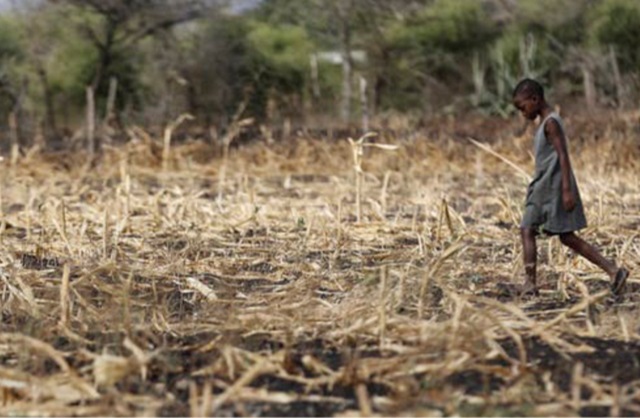
Why some Kenyans are going hungry months after a bumper maize crop
| Timothy Njagi Njeru | Why are people going hungry in April after a bumper crop of staple maize was harvested last year?
Distribution remains a persistent challenge when it comes to food access in Kenya. There has been systemic market failure in moving food from surplus regions to deficit regions. Economic theory predicts that in a functioning market system, incentives through higher price will be offered to attract suppliers from surplus areas.
In Kenya’s case, the expectation is that the price of food in deficit areas will be higher, attracting traders who buy from producers in surplus areas to sell in the deficit areas. This goes on until there is equilibrium – the demand in the deficit areas is met and prices return to equilibrium.
But the market system consistently fails to deliver this outcome in Kenya. And deficit areas remain under supplied. In addition, the government fails to correct this market failure, in spite of an effective early warning system coordinated by the National Drought Management Authority.
The authority releases seasonal assessments and monthly reports on the drought and famine hot spots, including the current scenario facing the country.
Reports of severe hunger amid plenty highlight the fact that there’s coordination failure in government. The government’s failure to coordinate the efforts of various actors at both the national and county levels is what has led to this situation.
What should happen to ensure food flows from production to deficit areas?
The National Drought Management Authority releases early warning reports for famine prone areas. Other important reports, such as those by the Famine Early Warning Systems Network, provide forecasts not only for Kenya but for the region.
But, as is often the case in Kenya, key policy decisions don’t follow.
The media started reporting the current famine in early January. Reports escalated in March, after which there was an immediate response by the government. This response must obviously be welcomed. But why is the government always reactive? Back in August last year the drought assessment reports was warning that about food shortages based on the Kenya Meteorological Department’s warning about rain shortfalls.
In addition, reports by the regional early warning system were also available.
All these reports should have prompted measures to improve surveillance in the hot spot areas and action planning should have started by the end of 2018. None of this has happened.
It’s not too late. But the government needs to act quickly to identify citizens’ food needs in areas affected by the drought. It needs to put measures in place to ensure access of food. Already, the National Cereals and Produce Board has released 450 tons of maize to be distributed in the affected areas. But that might not be enough. The government was work out what’s still needed until the famine stress is over, then plan to make food available in these areas.
There isn’t a shortage of maize: farmers in the maize basket regions have a lot of grain in their stores. In fact, most farmers are still trying to offload their stocks.
Effective delivery systems don’t imply that the government should start sending trucks loaded with food to affected areas. Innovative approaches should be used. For instance, the market is likely to respond faster than the government. The government could kick start a virtuous cycle by providing cash transfers to affected citizens, enabling them to buy food. This in turn would lead to farmers who have maize in their stores to start selling to suppliers attracted to delivering food in famine areas.
Why is this not being done and who is responsible for any failures?
There is a lack of coordination and clear lack of implementation of the strategies for ending drought emergencies. Although food security is a national government function, county governments should play their part. County governments are, after all, the “first responders” when it comes to food security.
For this to happen, data on food production and consumption must first be updated. The availability of data and evidence is critical for decision making. But the capacity of county governments to collect reliable and accurate data is weak. And the capacity at the country’s meteorological centre needs to be strengthened. Without proper data neither the national nor the county governments can plan for famine and drought.
Secondly, policy makers should already be getting into gear to take action in areas likely to be affected by the fact that forecasts for the long rains season, expected from March to May, have been revised to suggest that some areas won’t be getting adequate rainfall.
This would ensure that national and county governments don’t land up struggling to deal with an emergency. By preparing adequately they can avoid situations such as the one the country currently finds itself in.
Timothy Njagi Njeru is a Research Fellow, Tegemeo Institute, Egerton University
 The Independent Uganda: You get the Truth we Pay the Price
The Independent Uganda: You get the Truth we Pay the Price



